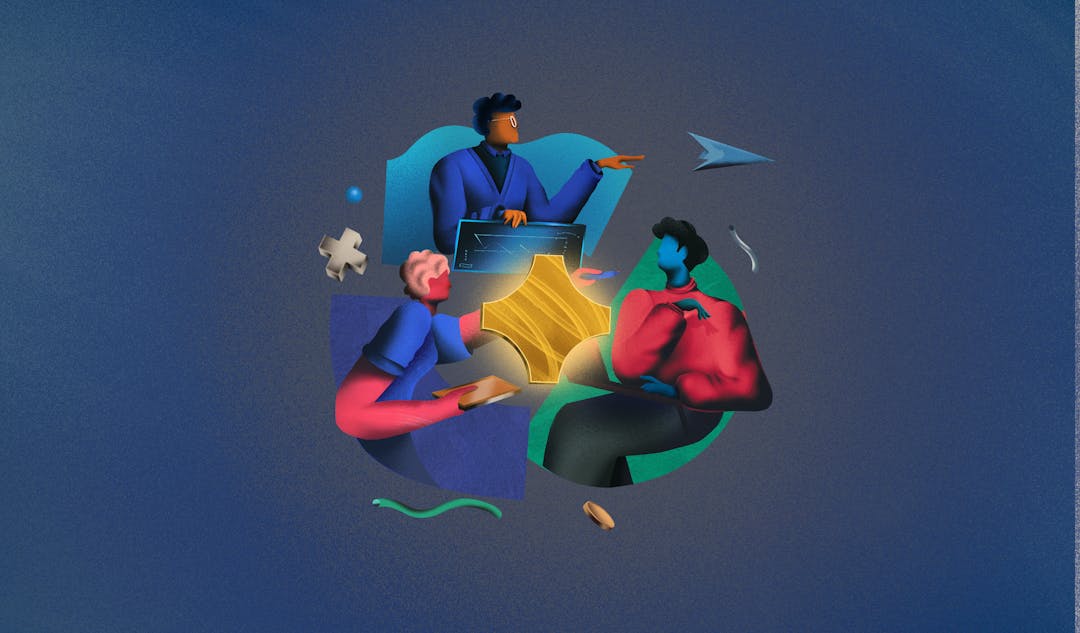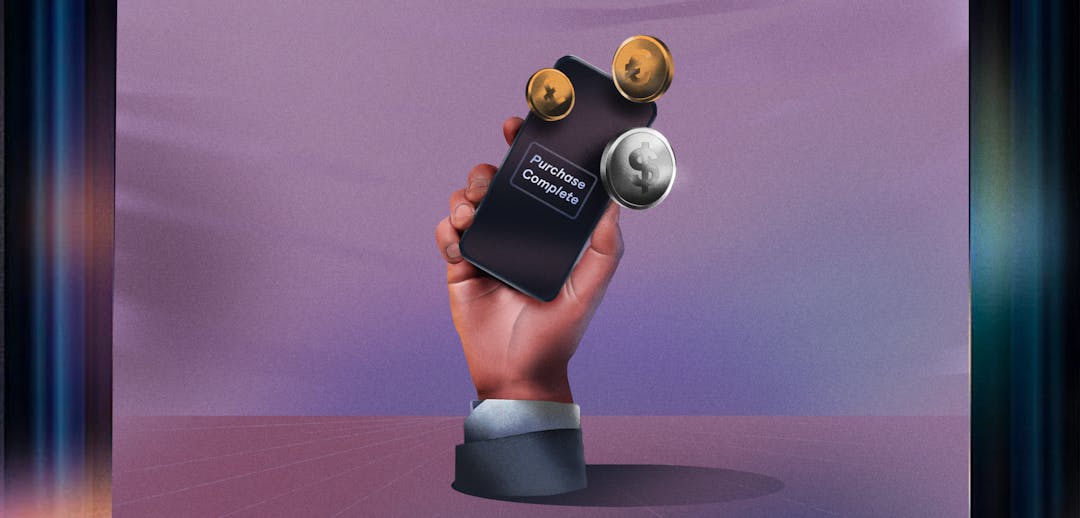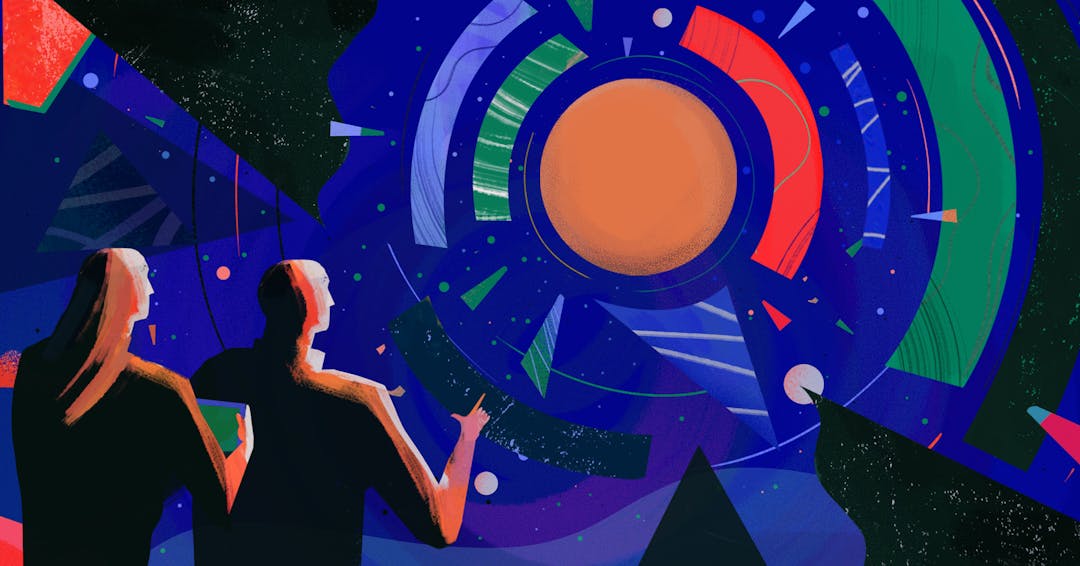A complete list of how to monetize your software with actionable steps on how to implement them for your business.
- What is a monetization strategy?
- What is software monetization?
- 12 monetization strategies
- 1. Licensing model
- 2. Subscription model
- 3. Freemium model
- 4. Open-source model
- 5. In-app purchases
- 6. In-app advertising
- 7. Partnership model
- 8. Pay-as-you-go model
- 9. Premium model
- 10. Product model
- 11. Affiliate marketing and lead generation
- 12. Email marketing
- How to monetize successfully
- Need more help with your strategy?
- Software monetization FAQs
There's no feeling like clients and businesses alike lining up to pay big bucks for your software. Designing and developing software to successful completion is rewarding, but what's more rewarding is when your intellectual property earns you some Benjamin Franklins.
And for that you need a software monetization strategy. Because if you don't have one, all your hard work might be for naught.
If you are a software developer, good at what you do but lack a software monetization strategy, don't sweat it; you are in the right place. Below, you'll find insights on software monetization strategies you can employ to ensure improve operational efficiency, reconsider your software license management strategy, and most importantly—you start gaining revenue.

What is a monetization strategy?
A monetization strategy is a plan that aims to generate revenue via your platform, audience, content, or other sources. There are a lot of different monetization strategies. Some of the most common include selling access to the platform, selling ad space, in-app purchases, and more.
Great monetization strategies are ever-evolving based on the company's goals, which are also constantly changing. They should also be flexible enough to develop and further evolve based on time, market, and users.
What is software monetization?
Software monetization is the act of adding value to the software you own—your intellectual property—and gaining revenue from that value. Having the right software monetization strategy will attract revenue and protect your intellectual property against any infringement.
Additionally, software monetization will accelerate your business's growth and bottom line. Focus on positioning your software to attract the right clients, throw in the right features, and above all, take your time to develop and employ the ultimate pricing strategy.
12 software monetization strategies
Software vendors and SaaS companies employ various monetization strategies to drive revenue, accelerate growth and lead the industry; below are 12 of them that software publishers and product managers can choose from based on their specific product and business strategy.
1. Software licensing solutions
A software license is a legal tool governing the distribution and use of your software. License models can protect your intellectual property in source and object-code forms. This strategy offers software protection and safeguards your product against any infringement, including software piracy, unauthorized duplication, sharing or using your intellectual property, and utilizing multiple creative pricing strategies such as penetration pricing and premium pricing.
Example: SAP
SAP monetizes the platform by providing Enterprise Software and SaaS to its 400,000 global subscribers. To gain access to the software, you have to purchase a license and then accept the license's terms and conditions. This software monetization strategy applies to both B2B and B2C environments.
You can rely on one of the software licensing models when you want to retain ownership of the software until the end-user pays for the license to use it.
2. Subscription business model
Great for both B2B and B2C, this strategy represents one of the most effective software monetization solutions as it drives revenue through recurring access fees at regular time intervals, such as monthly or yearly.
A Zuora report shows that while 53.3% of subscription-based businesses remained unchanged by the Corona Virus pandemic, 23% of these businesses reported an accelerated growth.
Use a subscription model to enhance customer experience through regular updates and improvements, and maximize revenue through recurring fees and monetize existing customers.
Example: Hubspot
HubSpot has ideally adopted this software monetization strategy as all of its products are offered on a subscription basis. Daily product updates and improvements ensure all clients enjoy different product varieties but at the same prices.
Netflix, Amazon Prime Video, and other streaming services use this monetization strategy. While their ad revenue is lesser than streamers offering both free and paid versions, the value proposition of providing an ad-free viewing experience yields them better results.
3. Freemium model
This will see you give part of your software on app stores for free to your user base. In a saturated software market, a freemium strategy reduces purchase barriers and encourages an end-user to sign in and try out your software product.
Acquiring clients through ads, sales, and marketing can result in high customer acquisition costs (CAC). A freemium app monetization strategy can substantially reduce CAC. The goal of freemium is to convince your growing clientele to use the free version and enhance customer experience enough to convince them to pay and experience all functionalities of the software.
You can use the freemium model to prove to your clientele that you can provide a positive and engaging user experience in both the free and locked versions.
Example: HBR
A Harvard Business Review reports that while most businesses report a 2-5% conversion rate, Spotify boasts of having a 43% conversion rate.
Additionally, Spotify emphasizes data, experimentation, and dialogue to run a root cause analysis. These attributes enable Spotify to monetize the platform and generate revenue.
4. Open-source model
This developer-focused strategy allows developers to 'throw' their code out there for everyone to access, customize, and control. There's a lot of money in the open-source ecosystem, with some big tech giants such as MongoDB making $13.6 billion.
Open source code is free and offers features that help end-users perform their daily tasks, customized to meet their business needs. However, monetization applies when an end-user needs additional technical support, premium features, hosting services, and SaaS.
You can use open source when you want to create an engaging user experience while allowing users to contribute to the improvement of your software.
Example: MySQL
MySQL, an Oracle-owned database and self-dubbed "the world's most popular open-source database," has free, open-source software. Nevertheless, there are three other enterprise versions with annual subscriptions and premium features absent in the free and open-source code, such as Oracle premier support for MySQL.
5. In-app purchases
This B2C strategy allows end-users to make purchases for deliverables within your software. ZDNet reported 2020 in-app purchases of $380 billion, globally.
In-app purchases are popular among app developers developing mobile apps (both Apple iOS and Android), as it is a great way to drive revenue; however, they can disrupt customer experience and lead generation if not done right. To encourage in-app purchases:
- Notify of the presence of in-app purchases within your software
- Use push notifications to notify existing users
- Implement customer loyalty programs to enhance user experience
You can use in-app purchases to improve the user experience and ensure the end-user receives great value.
Example: Candy Crush
You can be stuck on level 534 in Candy Crush, where you need to clear all jellies in 25 or fewer moves to earn at least 200,000 points. To maneuver out of these levels with your game lives intact, you can purchase extra lives, movements, and color bombs. These purchases will not only help you in the game but also increase customer satisfaction.
6. In-app advertising
A report shows device users spent more than 1.6 trillion hours on their gadgets. Software and apps have a higher click-through rate (CTR) than web ads, making monetizing ads vital. In-app advertising makes ads appear natural thanks to target advertising, and you can custom tweak the ads to appear at various stages in the in-app journey. Because of this, many social media and news apps utilize this monetization method.
Use this B2C strategy to target specific demographics and improve your software to encourage more frequent and prolonged visits.
Example: Facebook
Facebook has come a long way since introducing in-app ads in 2007. From social ads, sponsored stories, mobile ads, banner ads, native ads, campaigns, video ads, and ad sets to the current eight separate advertising options. This software monetization strategy has seen Facebook drive revenue over $31 billion.
7. Partnership or sponsorship model
Sometimes, it takes two to build a successful software application. Partner with an independent software vendor (ISVS), like-minded developer, or one specializing in the same niche as you, and combine resources to improve your products and accelerate new user acquisition.
Employ this software monetization strategy to increase clientele, enhance customer experience and raise awareness.
Example: BMW
The BMW i8 was designed to match Louis Vuitton's exclusive four-piece bags and a suitcase that fit into the sports car's rear deck. These two brands have an affluent clientele in common and, combined, drive considerable revenue. The vehicle costs $ 135,700 while the bag and suitcase set costs $20,000.
8. Pay-as-you-go model
This pay-as-you-go software monetization strategy has a low barrier to entry for customers, as it offers flexibility around their needs, and there's no commitment. It allows a user to pay a one-time cost for the software to gain access and use it at that particular time. If they need it again, they pay for it again. In short, the user will only pay for the software when the need arises.
You can use this software monetization strategy to diversify your clientele, including those who don't favor other pricing models and acquire those who prefer a more controlled and flexible pricing plan.
Example: Twilio
The cloud-based telecom platform, Twilio only charges active users, and charging commences once communication begins.
9. Premium model
If you're looking to charge higher prices than your competitors, consider a premium pricing strategy. The premium strategy doesn't consider initial low prices to penetrate and establish in the market; instead, you can set a high price for software usage upfront and present your software as a high-quality product.
Use this B2C strategy to establish your software as high quality in your client's minds.
Example: Rolex
Rolex adopts this monetization strategy to the tee. You can buy a regular wristwatch at $30 and still tell the time. On the other hand, a Rolex watch will fetch $10,000, and it can have fewer features than a regular watch. Consumers equate the high price to extremely high quality giving the brand a status symbol.
10. Product model
Sometimes, clients don't pay for the use of an online service or software. If clients aren't paying for it, then the app provider is monetizing customers, making them the product.
By utilizing data analysis, the provider leverages data they collect about you, sells ads to advertisers who pay high CTMs to target you with ads and CTAs.
Use this strategy to enhance customer experience through target advertising.
Example: Google
Google offers a host of free services such as Gmail and Google search. By enabling a tracker in your account, Google collects your data, sells ads to advertisers who then target you with ads.
11. Affiliate marketing and lead generation
In this strategy software monetization strategy, all you do is promote a link(s) inside your software or app. Businesses and other developers insert links inside your app with a CTA, such as download and install. For every successful CTA, you get a commission. Similarly, you can capture the data of users showing genuine interest in a CTA. In lead generation, you get a commission by capturing such data.
Utilize this B2C strategy to diversify your revenue streams and establish your product across multiple industries.
Example: Maxweb
MaxWeb—a global affiliate network, can pay you to promote various brands across various industries by embedding links inside your app. For every successful CTA, you earn a commission.
12. Email marketing
Research shows that global email users amount to 4 billion. Additionally, 85% of B2B marketers work with email marketing tools to assist with content marketing, while 90% prefer email engagement to measure content performance.
With the help of email marketing software, you can send ads, share valuable info about your new product, and a CTA.
Utilize this B2C strategy to accompany your users in their journeys and promote user engagement through up-to-date updates.
Example: Mumsnet
Mumsnet relies on automation and sends pregnancy newsletters triggered by a user's due date. Future moms subscribe via custom email signup forms that capture their due dates. When the due date approaches, Mumsnet's system automatically sends the pregnancy newsletter to the new mom.
How to monetize your software successfully
Erick Schmidt, former Google CEO said, "Revenue solves all problems." In business, this holds mostly true. But in order to get those gains, there is some work to be done.
Understand market trends
Each software has a unique monetization strategy that works best for it. If one strategy worked in a particular market, it doesn't mean the strategy will work in another. To stay ahead, maximize and earn new revenue, understand market trends to find the right approach.
Protect your intellectual property
To avoid infringement on your intellectual property, familiarize yourself with various modes of IP protection such as copyright, trademarks, and NDAs. Include an IP clause in your software terms. Understanding IP protection will help decide which software monetization strategy to employ.
Leverage customer feedback in product development
Research shows 52% of consumers prefer businesses to take action on customer feedback. As one of the vital aspects of your software development, software companies are encouraged to engage directly with the clients about their experience using the software. Use this feedback to decide on the best software monetization strategy to use.
Track revenue performance
Analyzing and improving sales and marketing efforts using revenue as the base indicator reveals which software monetization strategy drives the most revenue. Revenue Performance Management (RPM) will guide you in achieving ROI and accelerated top-line growth
Adjust your pricing strategy regularly (and talk about it!)
While pricing is the most overlooked component in business, monetization is the top influencer for client acquisition and retention. Price adjustments directly affect all business aspects. Therefore, when you adjust your product's prices, be sure to communicate to your existing and potential clients.
Rinse and repeat
Suppose you don't get it right the first time, no worries. You'll get through MVP1, MVP2, or more until new information on the software becomes scarce, resulting in a stable product through pivoting. If one of the software monetization strategies doesn't work, start again. Test until you achieve the desired results.
Build a winning software monetization strategy with Price Intelligently
Your product is finished, your product launch plan is ready, and you're preparing to take what you've built to market, but how do you build a winning software monetization strategy to achieve maximum profitability?
While you can definitely experiment with different monetization strategies, Price Intelligently, our world-leading subscription pricing team will ensure you have set the right price for your software and unlock a 30% growth. Their services include:
Competitive analysis with market mapping
In-depth data analysis to assess your competitor's strengths and weaknesses. Using this assessment, you'll access tangible data in form of readable formats, such as graphs, and gain competitor insights and spot any marketing gaps that could turn into your business opportunities.
While the market map will measure quality and price, it can also show issues such as demographics, budget, and time duration, to name a few.
Use data to pick the right software monetization strategy
Price Intelligently carefully analyzes all software monetization strategies you have employed to drive revenue. A close look will show the strategy with the highest ROI, helping you find the right strategy for you.
Automate rollouts to local markets
Price Intelligently will monitor your business's health status in the local markets to reduce risk, prevent failure, and deploy fail safes. In case of a failure, Price Intelligently will automatically roll back the losses and ensure a balance.
Real-time competitive audits to inform price adjustments
Our software will track your competitor's market position and strategies they use for more online visibility. Price Intelligently will discover what works best for your competitor and use those strategies to your competitive advantage. Also, these audits compare different market prices and help you make an informed decision on the best software monetization strategy.
Software monetization FAQs
How do you monetize software?
You can monetize by applying various monetization strategies that'll drive revenue. These software monetization strategies ensure that pricing gains the attention it deserves.
What does monetization mean?
Monetization is the act of setting a price for products and gaining revenue from that price.
What is a software monetization model?
A software monetization model is a detailed architecture that describes software monetization. Pricing software can be tricky, especially for startups who are doing it for the very first time, and a software monetization strategy will help you set the right price for maximum revenue generation.
How to monetize your free software
Free software can be open source, meaning it's accessible to everyone. While you won't earn new revenue from the source code, you can move revenue through additional services such as technical support and ads.




